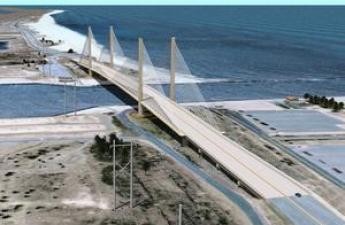
Eileen Youens
Today’s Guest Post is from Eileen R. Youens. Eileen is Assistant Professor of Public Law and Government at the UNC School of Government, where her areas of interest include public contract law, including purchase contracts, construction contracts, conflicts of interest, and disposal of property.
The ABCs of IFBs, ITBs, RFPs, RFOs, and RFIs
What’s the difference between an IFB, and RFP, and an RFQ, and what are they anyway? As I’ll explain in more detail in this post, what name you give a solicitation document—the document you use to solicit bids or proposals—is not as important as the process you use to award the contract. And the North Carolina General Statutes usually dictate which process you’re required to use.
The Four Types of Documents
There are four main types of solicitation documents: (1) those used for bidding, where price is the primary factor; (2) those used to request proposals focusing on factors other than price; (3) those used to ask for someone’s qualifications; and (4) those used to gather information from potential bidders or proposers before starting the bid or proposal process. I’ll explain below when local governments can use each of these four types of documents.
The First Type: Bids
Under North Carolina law, local governments are required to bid out purchases of “apparatus, supplies, materials, and equipment” (what I like to refer to as “stuff”) costing $30,000 or more, and contracts for construction or repair costing $30,000 or more. (Local policies may require bidding on other types of contracts or for contracts costing less than $30,000.) The bidding statutes, G.S. 143-129 (formal bidding) and G.S. 143-131 (informal bidding), require that these contracts be awarded to the lowest responsive, responsible bidder. This “award standard” is what distinguishes bidding from other contracting methods. To solicit bids, public entities usually use Invitations to Bid (ITBs) or Invitations for Bids (IFBs). For informal bids or for purchases or construction costing less than $30,000, local governments may also use a request for quotes (“RFQ” – not to be confused with another RFQ: the request for qualifications, discussed below).
The Second Type: Requests for Proposals
North Carolina local governments have the option of using a request for proposal process for the purchase of information technology goods and services (G.S. 143-129.8). This process allows local governments to establish their own evaluation criteria (i.e., evaluating vendors based on how well their product meets your entity’s needs, rather than focusing primarily on price), and award the contract to the vendor “that submits the best overall proposal.” I say that this is an option because if you’re purchasing IT “stuff” that costs $30,000 or more, you can either (1) bid it out (formally or informally, depending on the cost), or (2) use the request for proposal process described in G.S. 143-129.8. On the other hand, if you’re contracting for IT services, those services don’t fall under the bidding laws, so you can either (1) use the request for proposal process described in G.S. 143-129.8, or (2) use any process you want to use, or no process at all (simply selecting the firm you’d like to work with), unless your local policy requires a specific process for the procurement of services. Note that if you’re using grant funding, you must comply with the terms of the grant. (For example, if the grant requires you to bid out IT goods instead of using a request for proposal process, then you have to comply with the grant.)
The North Carolina statutes refer to requests for proposals in two other situations. First, G.S. 143-64.17A requires that all public entities in North Carolina use a request for proposal process for the procurement of guaranteed energy savings contracts (GESCs). The statutes governing GESCs (G.S. 143-64.17 through G.S. 143-64.17K [scroll down to “Part 2. Guaranteed Energy Savings Contracts for Governmental Units”]) set out a specific request-for-proposal process and specific evaluation criteria that must be used for these types of contracts. Second, the statutes allow North Carolina local governments to use a request for proposal process for contracts for the construction, design, operation, and maintenance of solid waste management facilities and sludge management facilities. The statute governing these contracts is G.S. 143-129.2.
As I mentioned above, local governments are not required to bid out services (aside from design services—discussed below). In fact, the General Assembly has decided to let local governments choose how to procure services. Many local governments use requests for proposals to procure services, as a way of seeking competition while considering factors in addition to price. When a local government uses a request for proposals to procure services, the local government decides how the proposals are evaluated, what the timeline is, whether to advertise or not, and whether to open proposals in public or not. In other words, when procuring services, it’s up to each government to decide what process will best balance its needs for (1) good quality services, (2) value, (3) transparency, (4) efficiency, and (5) fairness. (As I mentioned above, if you’re using grant funding, you’ll need to comply with the terms of the grant; if the grant requires a competitive process for awarding contracts for services, you’ll have to comply with those terms.)
So the term “request for proposals” (RFP) covers a range of solicitation documents.
The Third Type: Qualifications-Based Selection
G.S. 143-64.31 (sometimes referred to as the “Mini-Brooks Act” because it’s based on a federal law called the “Brooks Act”) requires local governments to procure architectural, engineering, surveying, or construction-management-at-risk services—regardless of the contract amount—by focusing on qualifications rather than price. (Note that local governments can exempt themselves from this process.) So when people solicit these services, they often use a “request for qualifications” (RFQ).
You can also use qualifications-based solicitation (or some variation thereof) for other types of services. Again, since the general statutes don’t require the use of a specific process (or any process) for procuring services, the process you use is up to you (as long as you comply with your local policies or grant terms, if you’re using grant funding).
The Fourth Type: Information Requests
Another acronym you may see is RFI—a “request for information.” RFIs are not used to procure goods or services directly, but instead are used to solicit information about purchases or projects you’re planning to procure in the future. For example, if you know you’re going to have to buy some new police cars next year, and it’s been a while since you’ve bid out police cars, you could send out RFIs to several car dealers or manufacturers to find out what new features are available and what models might best meet your needs.
The Bottom Line
William Shakespeare really said it best:
“What’s in a name? That which we call a rose
By any other name would smell as sweet.”
In other words, the substance of the document is more important than what it’s called. If you’re soliciting firms to perform architectural services, your solicitation document must ask for qualifications instead of price, even if you call it an IFB. And if you’re bidding out a $1.2 million construction project, you have to award the contract to the lowest responsive, responsible bidder, even if you call your solicitation document a rose an RFP.
Eileen and I welcome your thoughts and questions in the comments section, below.
[hat tip to Mike Purdy, of Mike Purdy’s Public Contracting Blog, for bringing Eileen’s post to my attention]



